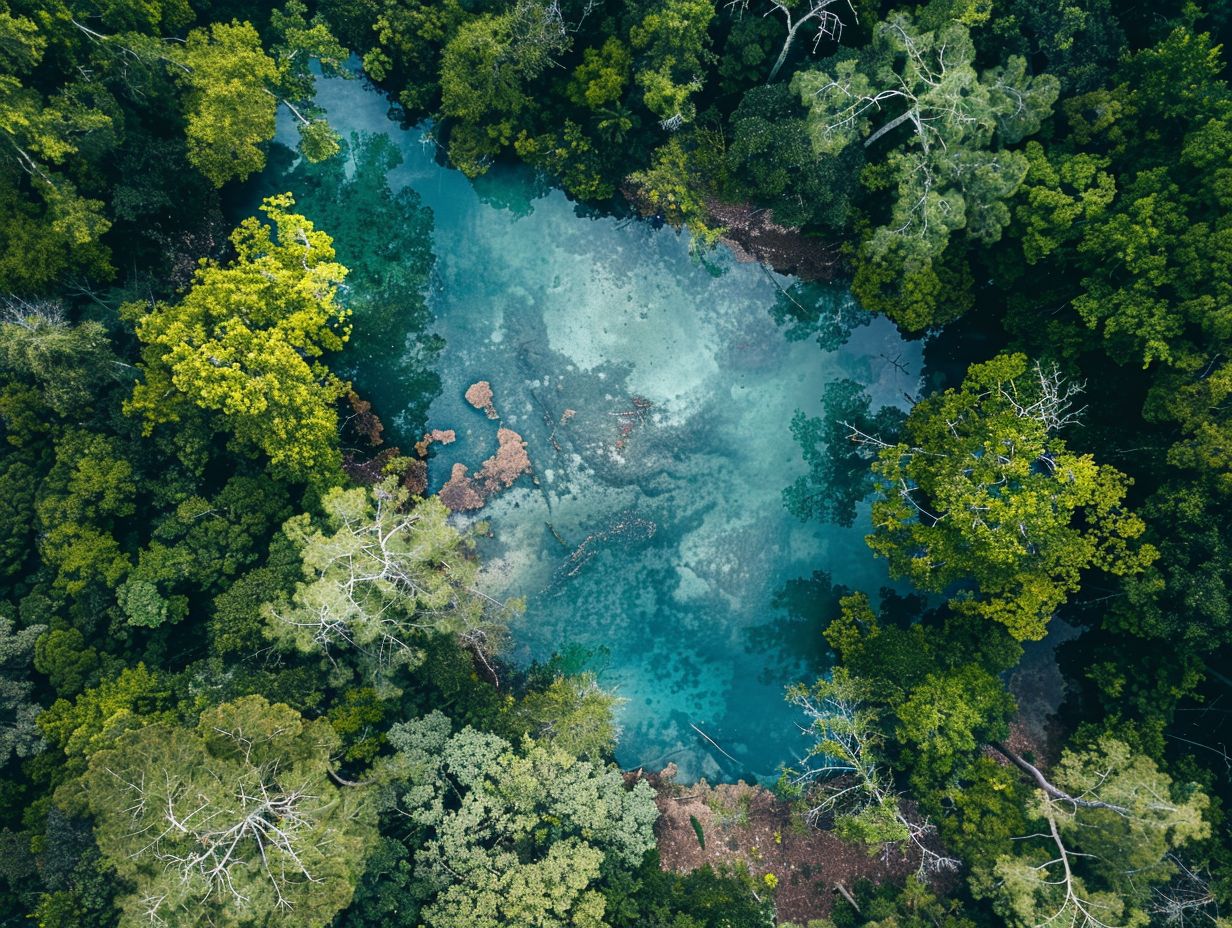Blue Spring State Park in Florida experiences a range of rainfall amounts throughout the year. On average, the park receives approximately 101.7 mm of precipitation annually. The rainiest months are typically June, July, August, and September, with an average precipitation of 197.3 mm, 174.8 mm, 172.9 mm, and 162.6 mm, respectively. The least rainy months are November, December, January, and February, with an average precipitation of 42.7 mm, 60.0 mm, 58.9 mm, and 56.1 mm, respectively.
Average Rainfall by Month at Blue Springs State Park
| Month | Average Rainfall (mm) |
|---|---|
| January | 58.9 |
| February | 56.1 |
| March | 76.2 |
| April | 78.7 |
| May | 101.6 |
| June | 197.3 |
| July | 174.8 |
| August | 172.9 |
| September | 162.6 |
| October | 101.6 |
| November | 42.7 |
| December | 60.0 |
Factors Affecting Rainfall at Blue Springs State Park

The rainfall patterns at Blue Springs State Park are influenced by several factors, including the park’s geographic location, proximity to the ocean, and the overall climate of the region.
Geographic Location
Blue Springs State Park is located in central Florida, near the city of Orange City. The park’s proximity to the Atlantic Ocean and the Gulf of Mexico contributes to the overall rainfall patterns in the area.
Proximity to the Ocean
The park’s location near the coast means that it is influenced by the moisture-laden air masses that move in from the ocean. This can lead to increased rainfall, particularly during the summer months when the sea breeze effect is more pronounced.
Regional Climate
Florida’s subtropical climate also plays a significant role in the rainfall patterns at Blue Springs State Park. The state experiences a distinct wet and dry season, with the wet season typically running from June through September and the dry season from October through May.
Seasonal Variations in Rainfall
The rainfall at Blue Springs State Park varies significantly throughout the year, with the summer months being the wettest and the winter months being the driest.
Wet Season (June-September)
During the wet season, the park experiences its highest rainfall, with June, July, August, and September being the rainiest months. This is due to the increased moisture in the air and the frequent thunderstorm activity that is common in the region during this time of year.
Dry Season (October-May)
The dry season at Blue Springs State Park is characterized by lower rainfall amounts, with November, December, January, and February being the driest months. This is due to the reduced moisture in the air and the less frequent occurrence of thunderstorms.
Rainfall Variability and Extreme Events
It is important to note that rainfall can vary significantly from year to year, and these averages are based on historical data collected over several decades. Extreme weather events, such as hurricanes or tropical storms, can also have a significant impact on the rainfall patterns in the area.
Year-to-Year Variability
While the average rainfall patterns at Blue Springs State Park are well-established, individual years can see significant deviations from these norms. This variability is due to a range of factors, including changes in global weather patterns, local microclimates, and other environmental factors.
Extreme Weather Events
Hurricanes and tropical storms can also have a significant impact on the rainfall patterns at Blue Springs State Park. These events can bring heavy rainfall, strong winds, and other severe weather conditions that can disrupt the normal rainfall patterns in the area.
Planning Your Visit to Blue Springs State Park
When planning a visit to Blue Springs State Park, it is important to consider the rainfall patterns and how they may affect your activities and enjoyment of the park.
Choosing the Best Time to Visit
If you’re looking to enjoy the park’s water-based activities, such as swimming, snorkeling, or scuba diving, the drier months of the year (October-May) may be the best time to visit. During the wetter months, the increased rainfall can lead to higher water levels and reduced visibility in the spring.
Preparing for Wet Weather
If you’re visiting during the wetter months, it’s important to be prepared for the possibility of rain. Bring rain gear, umbrellas, and other weather-appropriate clothing to ensure that you can still enjoy the park’s many outdoor activities.
Monitoring Weather Forecasts
Before your visit, be sure to check the current weather forecast and consider any potential impacts on your plans. This can help you make the most of your time at Blue Springs State Park and ensure that you have a safe and enjoyable experience.
Conclusion
Blue Springs State Park in Florida experiences a range of rainfall amounts throughout the year, with the summer months being the wettest and the winter months being the driest. Understanding the park’s rainfall patterns can help visitors plan their visits and make the most of their time at this beautiful natural attraction.
References:
– Blue Spring State Park Monthly Climate Averages – WeatherWX.com
– Climate & Weather Averages in Blue Spring State Park, Florida, USA – Time and Date
– Take a chance Tuesday – Blue Spring State Park, Volusia Co., FL – The Wild Florida Family
– Climate and Average Weather Year Round in Blue Springs Missouri, United States – Weather Spark
– Blue Springs Near Orange City, FL – 02235500 – USGS Water Data

